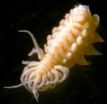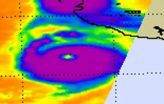The study, published online July 21 by the American Journal of Public Health, is the first to quantify the risk of homelessness among teens of different sexual orientations with population-based data. "Prior studies in homeless street youth have found that sexual minorities occur in much higher numbers than we'd expect based on their numbers in the community in general," says Heather Corliss, PhD, MPH, of the Division of Adolescent and Young Adult Medicine at Children's, the study's first author. "This study looked at the magnitude of the difference for the first time."
Corliss and colleagues analyzed data from the 2005 and 2007 Massachusetts Youth Risk Behavior Surveys (YRBS). The YRBS, conducted every other year in most U.S. states, draws a representative sample of students in grades 9 through 12. In 2005, Massachusetts was the first state to add a multiple-choice question assessing homeless status, asking "What is your primary nighttime residence?" or "Where do you typically sleep at night?" Homelessness was defined as lacking a fixed, regular and adequate nighttime residence, as per the McKinney-Vento Homelessness Assistance Act, the primary federal legislation dealing with the education of homeless children and youth in U.S. public schools.
The initial sample of 6,653 students was narrowed to 6,317 who gave full information on their sexual orientation and homelessness status. Less than 5 percent of students overall identified themselves as GLB, yet they accounted for 19 percent of those who identified themselves as homeless.
Rates of homelessness were 3.2 percent among exclusively heterosexual students, 12.5 percent among heterosexuals reporting same-sex partners, 15 percent among bisexuals, 25 percent among lesbian/gay students, and 20 percent among students who said they were unsure of their sexual orientation.
Among the youth who were homeless, those who were not exclusively heterosexual were more likely to be living away from their families. Among boys identifying as gay, 15 percent were homeless but unaccompanied by parents/guardians, and 8 percent were homeless but living with parents. Among lesbian girls, 22.5 percent were homeless and unaccompanied, while just 3.8 percent were homeless but with their parents. The same pattern held among bisexual students, among heterosexuals with same-sex partners, and among males unsure of their sexual orientation.
"Teens with a sexual minority orientation are more likely than heterosexual teens to be unaccompanied and homeless rather than part of a homeless family," says Corliss. "This suggests that they may be more likely to be mistreated or rejected by their families and more likely to leave home."
The researchers hope their findings will raise awareness of the vulnerability of GLB youth to homelessness, particularly among school administrators and other professionals working with adolescents. Homeless people are well documented as being at increased risk for victimization, physical and sexual abuse, mental health problems, substance use problems and sexual risk behaviors. These risks are even greater for teens who lack their families' supervision and support.
"The high risk of homelessness among sexual minority teens is a serious problem requiring immediate attention," says Corliss. "These teens face enormous risks and all types of obstacles to succeeding in school and are in need of a great deal of assistance."
The study has limitations in being done only in Massachusetts, where attitudes toward homosexuality tend to be more favorable, so it possibly underestimates the proportion of GLB youth that are homeless nationally. It also included only students who were at school on the day the survey was administered, so may have missed more homeless youths, who are more likely to be absent from school. Finally, because it was based on the YRBS, it wasn't able to assess family relationships or whether teens were "out" about their sexuality.
###
Bryn Austin, ScD, of the Division of Adolescent and Young Adult Medicine at Children's Hospital Boston, was senior investigator on the study. Carol Goodenow, PhD, with the Massachusetts Department of Elementary and Secondary Education, and Lauren Nichols of Children's were coauthors. Funding was provided by the National Institutes of Health and the Maternal and Child Health Bureau, Health Resources and Services Administration.
Resources for GLB teens
Massachusetts The Massachusetts Commission on GLBT Youth, whose goal is to improve the health and safety of sexual minority youth, provides information on available resources and makes annual recommendations to the Massachusetts Department of Public Health for addressing the health needs of this population, including the problem of homelessness.
Support and assistance are available from the youth-led Boston Alliance of Gay Lesbian Bisexual Transgendered Youth and through drop-in-centers run by the Boston-based Justice Resource Institute (Boston GLASS) and the AIDS Action Committee of Massachusetts (Youth on Fire).
Health services for homeless youth are available at the Sidney Borum Jr. Health Center.
Nationally A list of national resources for teens and youth can be found on the websites of the Center for Young Women's Health and the Center for Young Men's Health.
Special services for homeless teens are available through the McKinney-Vento Homelessness Assistance Act.
Children's Hospital Boston is home to the world's largest research enterprise based at a pediatric medical center, where its discoveries have benefited both children and adults since 1869. More than 1,100 scientists, including nine members of the National Academy of Sciences, 12 members of the Institute of Medicine and 13 members of the Howard Hughes Medical Institute comprise Children's research community. Founded as a 20-bed hospital for children, Children's Hospital Boston today is a 392-bed comprehensive center for pediatric and adolescent health care grounded in the values of excellence in patient care and sensitivity to the complex needs and diversity of children and families. Children's also is the primary pediatric teaching affiliate of Harvard Medical School. For more information about research and clinical innovation at Boston Children's visit: Vector Blog.
END


